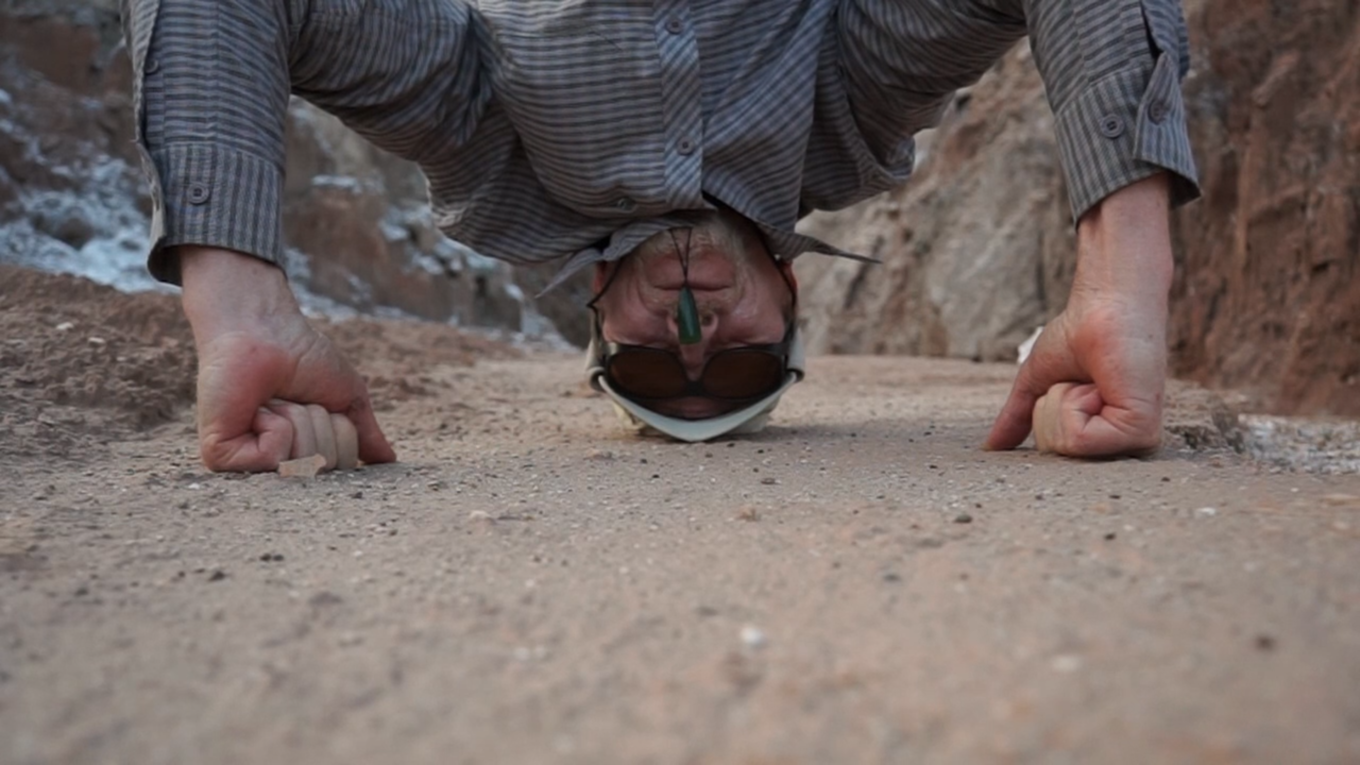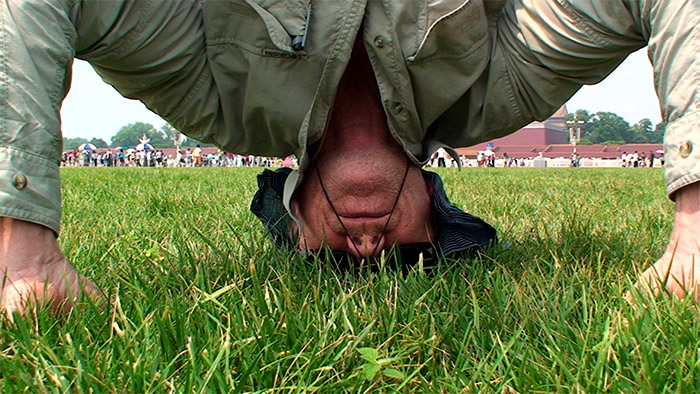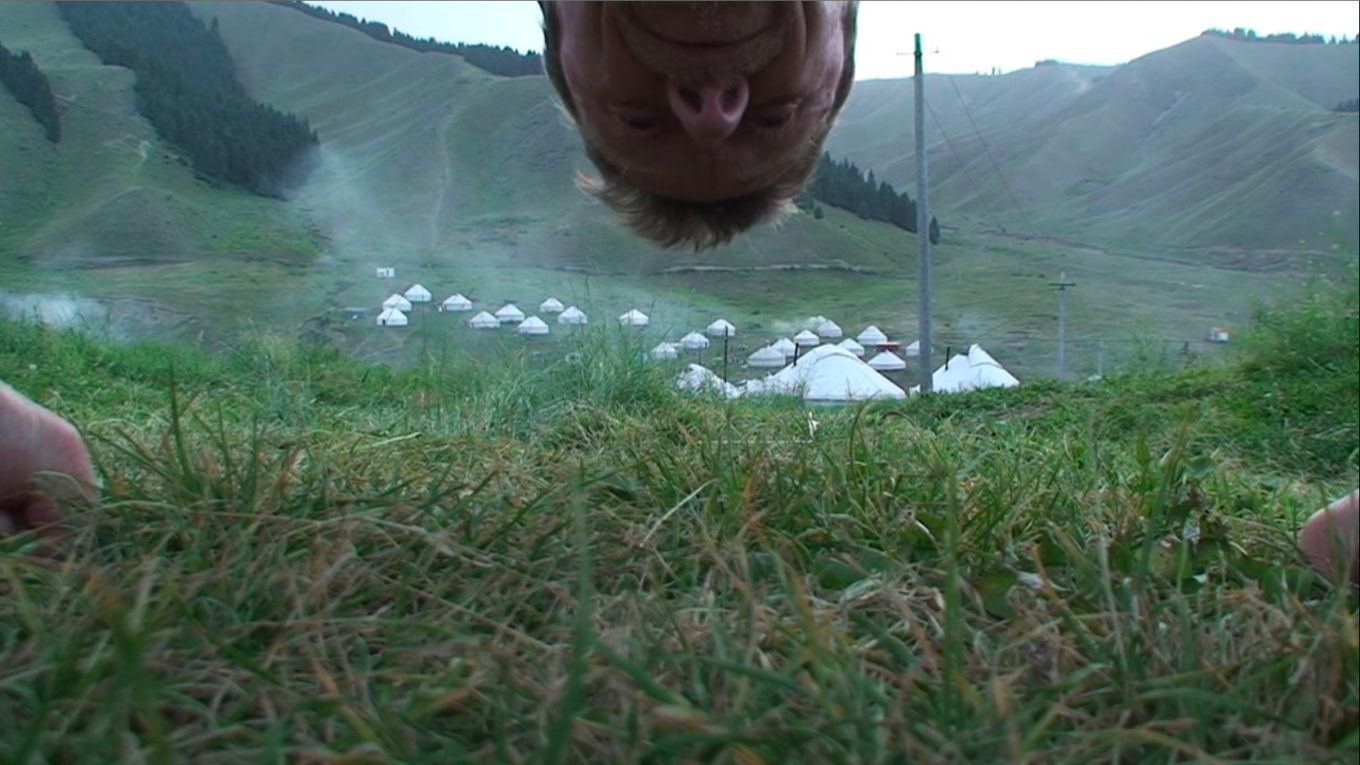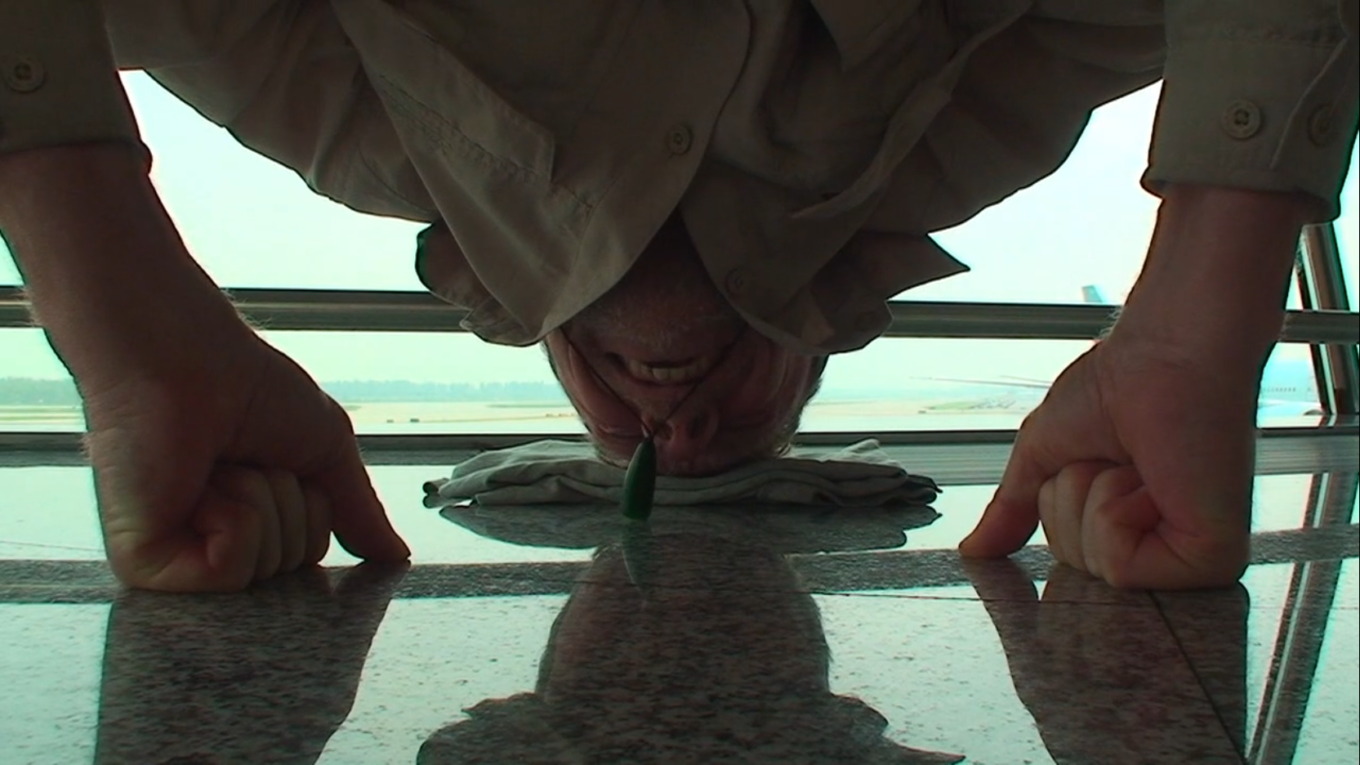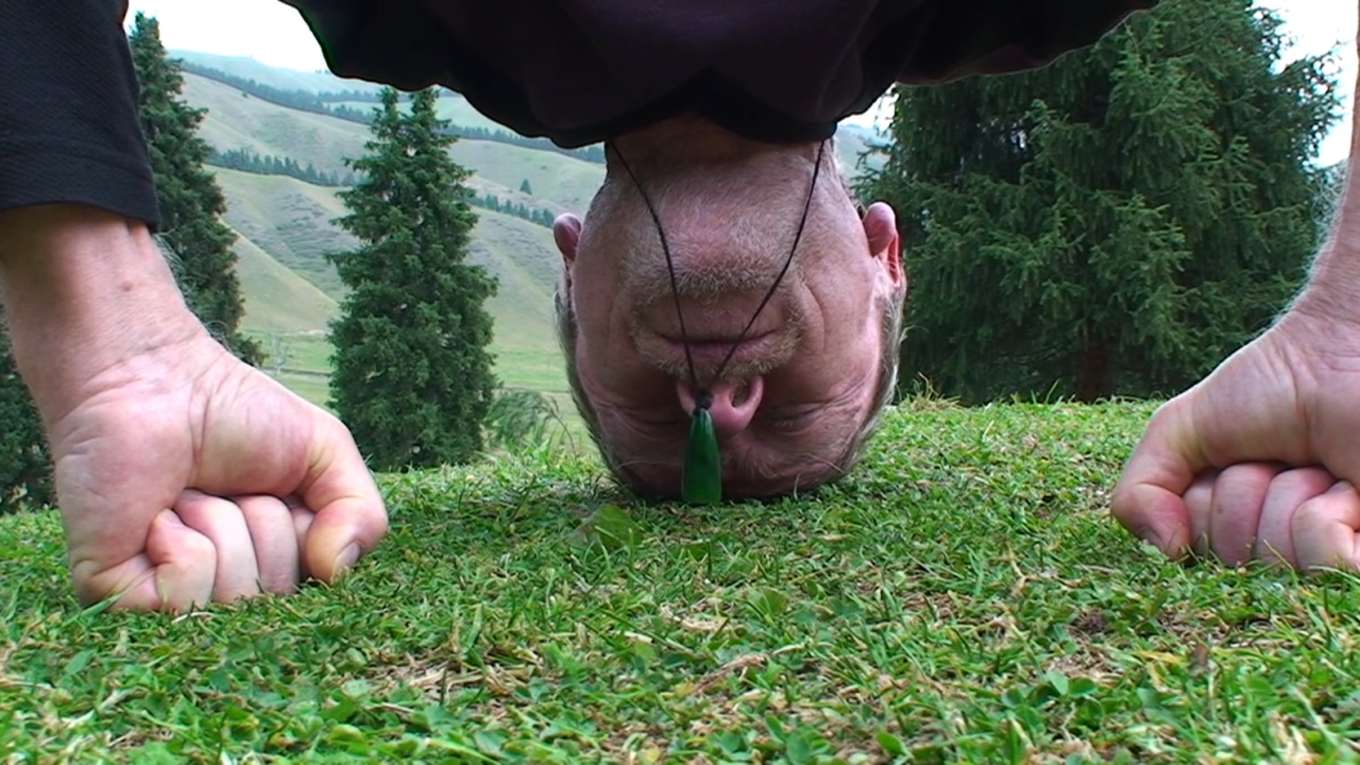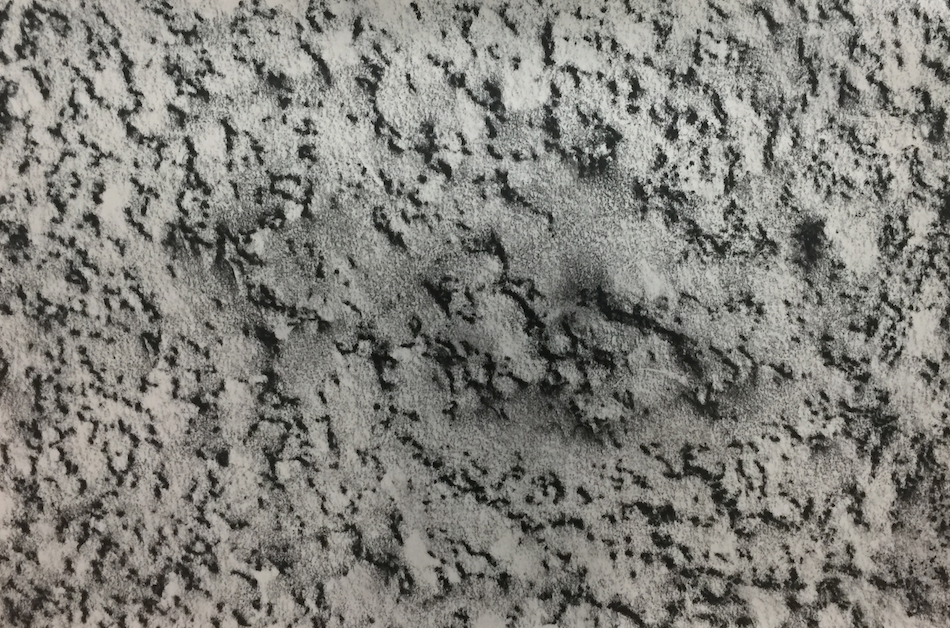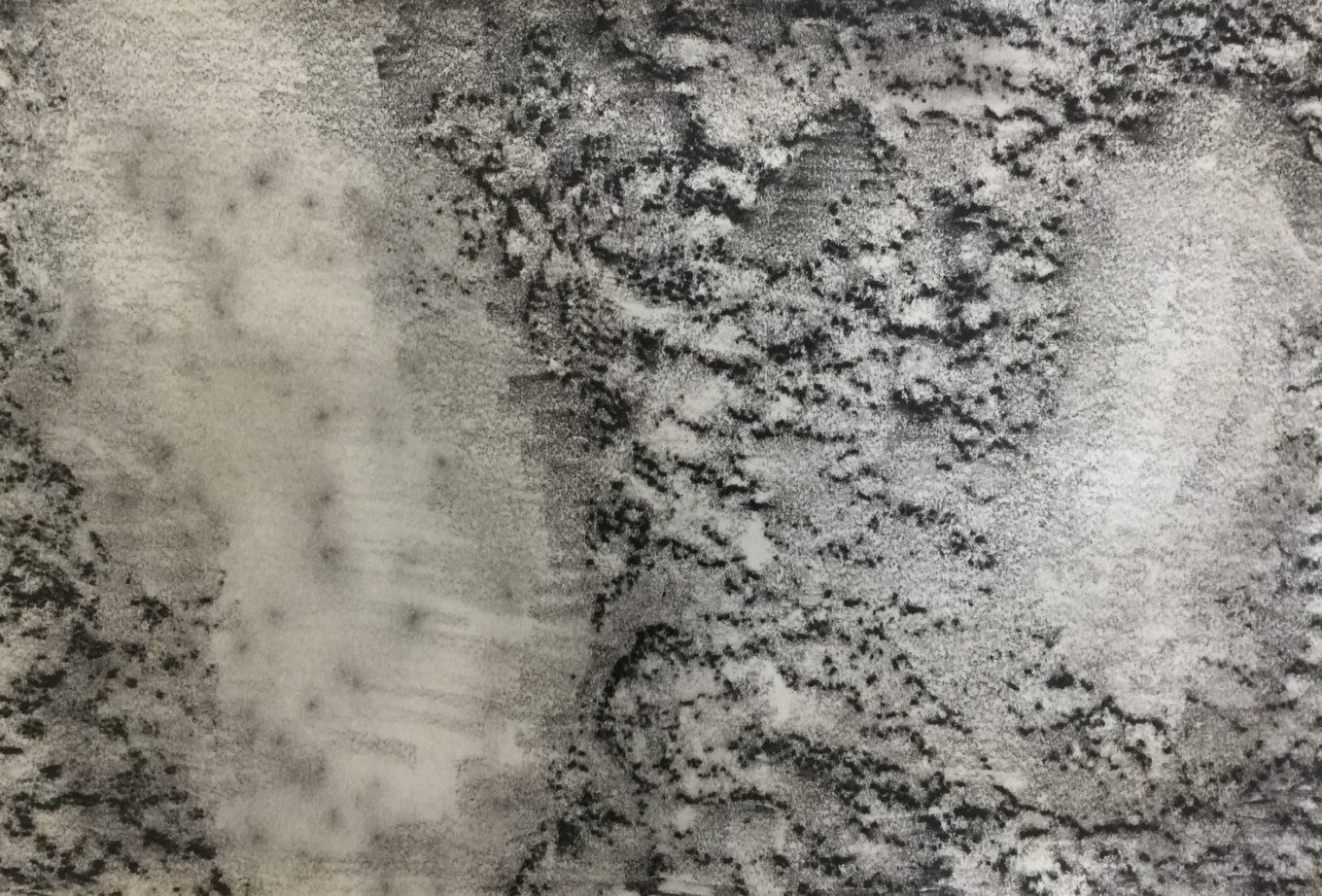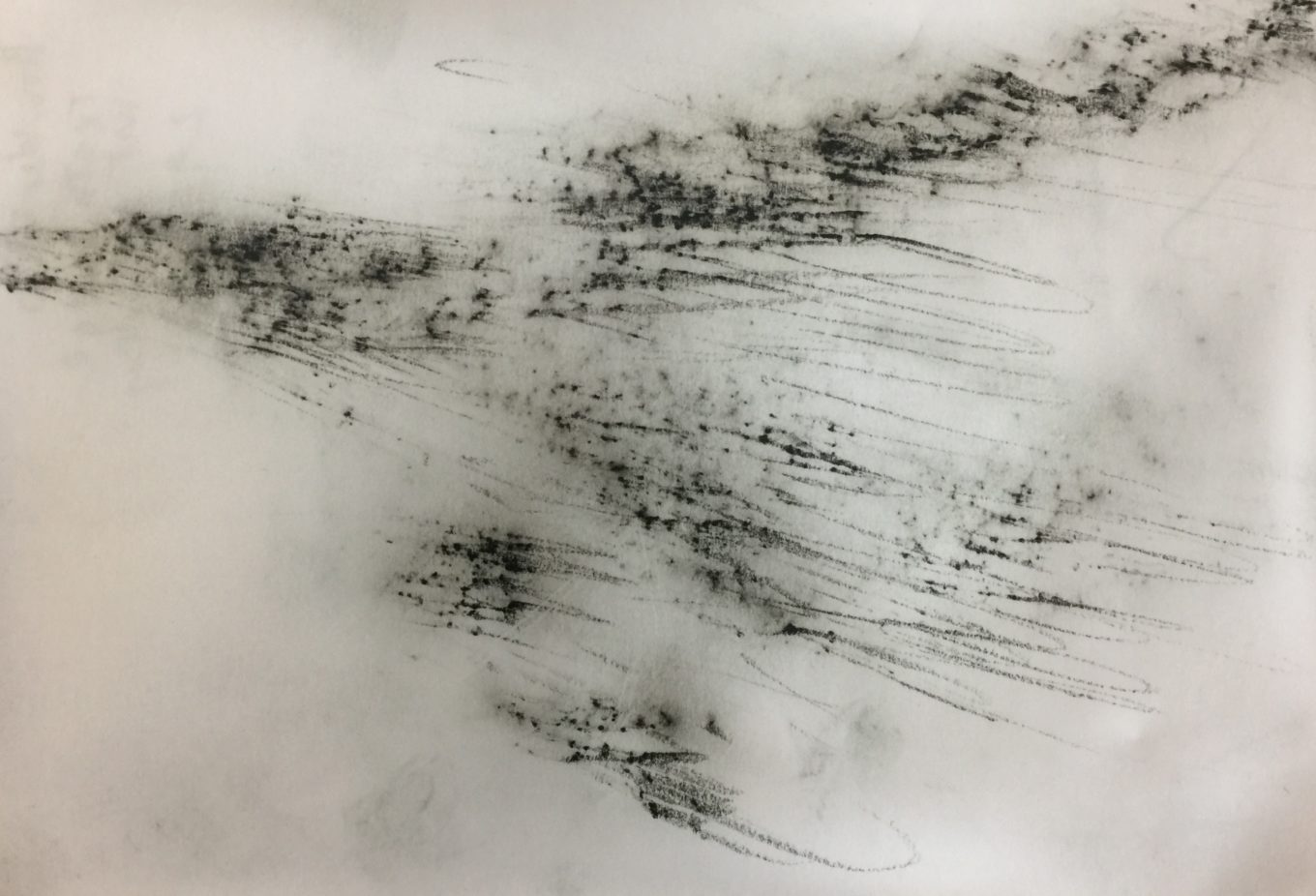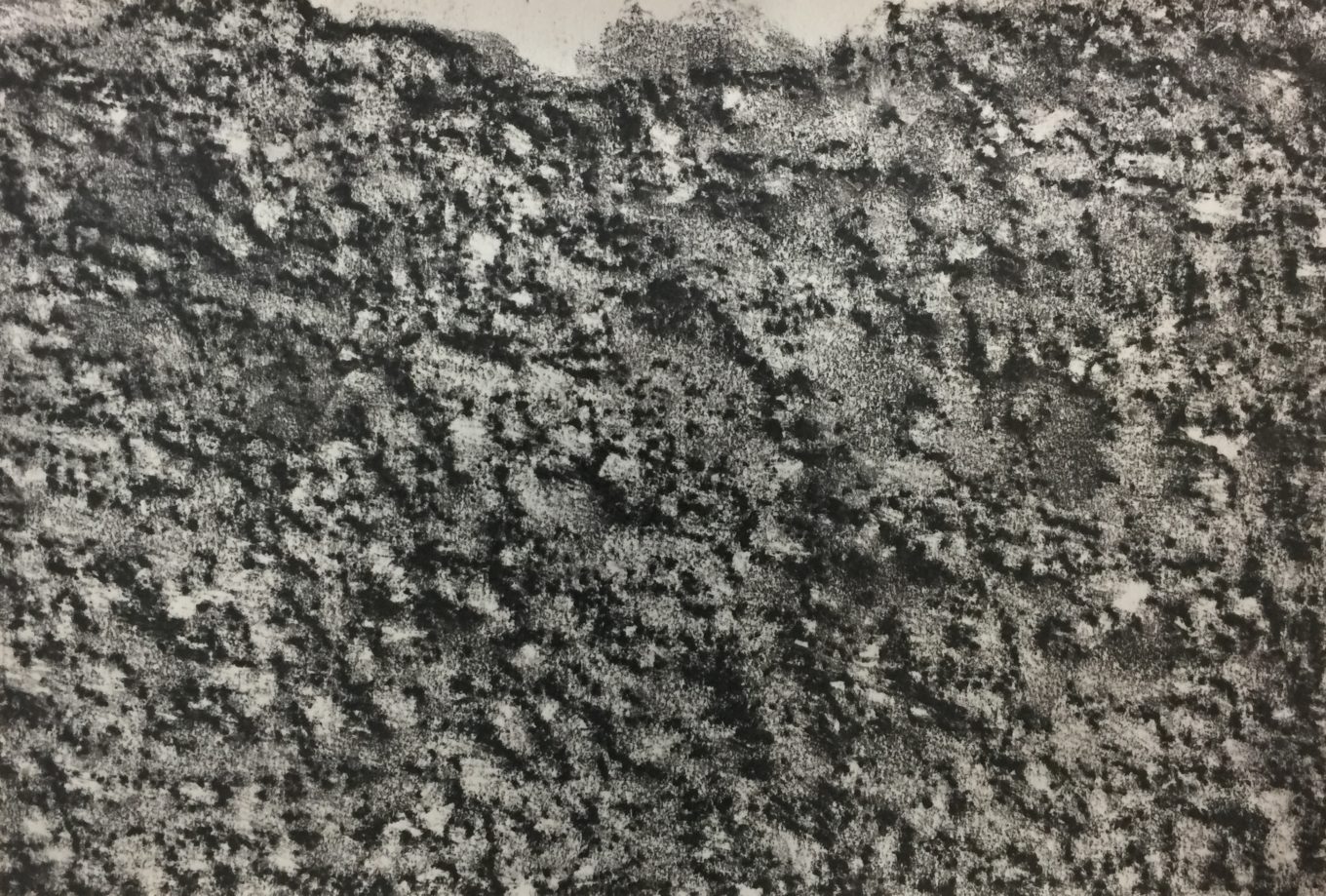Trish Clark Gallery is pleased to present Handstamps & Headstamps, the first presentation together of these two discrete but related bodies of work made from 2003 to the present across diverse global locations, including Antarctica, China, Chile, Raoul Island, Kermadecs and Aotearoa, New Zealand.
“It’s not so much a question as a proposition. For a finite duration we inhabit our bodies and our bodies inhabit the earth, a composite of atoms drawing from and returning to. This substantial fact we know and it is this that these gestures substantiate – Headstamps as homages to the earth that nurtures, and Handstamps, to traces that transcend the mantle.” – Phil Dadson
Video remains a constant passion for Dadson, as it synergistically combines image and sound with a unique physicality; his Headstamps series; durational performances of the artist holding headstands around the globe are captured as single channel digital videos – visual preservation of bodied mark making laboriously stamped into the earth. Shot variously across Chile’s high, dry, Atacama Desert, China’s northern Silk Route, mountainous Yangshuo in South China’s Guangxi province and, more locally, Oruamo, New Zealand, they explore the physical landscape in macro imagery, alongside the artist’s unexpected interventions in what is at times urban, arcadian, or deeply inhospitable landscapes.
In micro vision, the related Handstamps are “manipulated frottage, graphite drawings otherwise known as Rock Records…recorded impressions taken directly from stone & rock surfaces” which add lyrical expression to Dadson’s long-time environmental concerns. Rock Records (Antarctica, 2003), 2005 comprise a select sequence from two suites of such impressions, collected from the landscape in and around Garwood Valley in the Dry Valley region of Antarctica, and at Arrival Heights, near Scott Base. The complete series (with additional collections from Rangitoto Island, New Zealand, Wudangshan Mountain, China, Atacama desert, Chile, White Island, New Zealand and Raoul Island, Kermadecs) number 49 drawings from the artist’s notebook and 19 circular Dobson spectrophotometer ozone-depletion wax-paper recording discs. Dadson cites these, and related series on the spectrophotometer discs as “mute records of chthonic forces; the drumming of the sun on stone surfaces; a play on the disc as a carrier of recorded information.”
Dadson has proven to be a seminal figure in New Zealand’s art history, both for pushing the boundaries of sound and intermedia art since the 70s with the internationally renowned From Scratch – the subject of two survey exhibitions in 2018 (FROM SCRATCH: 546 MOONS at Te Uru Waitakere Contemporary Gallery, Auckland, New Zealand and FROM SCRATCH: 555 MOONS at City Gallery Wellington, New Zealand), and for his influence on a generation of leading mid-career artists. His highly inventive trans-disciplinary approach encompasses experimental musical instruments and sonic objects, video/sound installation, music composition, graphic scores, drawing, sound sculptures and improv with invented instruments.
Appointed to the Sculpture Department at Auckland University’s Elam School of Fine Arts in 1977, Dadson held the position of Head of Intermedia/Time-based arts from 1986 – 2001. Throughout his career, Dadson has been the recipient of many key awards and fellowships, enabling numerous international residency, exhibition and festival opportunities, most recently the Fulbright-Wallace Arts Trust Award at Headlands, San Francisco, in 2016. In 2001 he received a New Zealand Arts Foundation Laureate award, in 2003 an Antarctic Artist Fellowship and was appointed an Officer of the New Zealand Order of Merit (ONZM) in 2005.
Dadson lives and works in Auckland, New Zealand.

